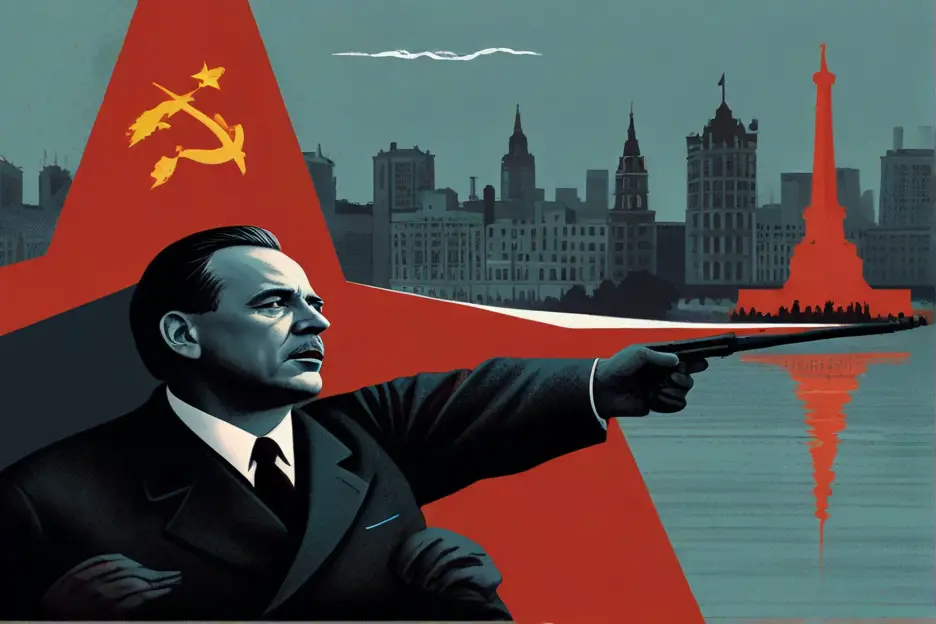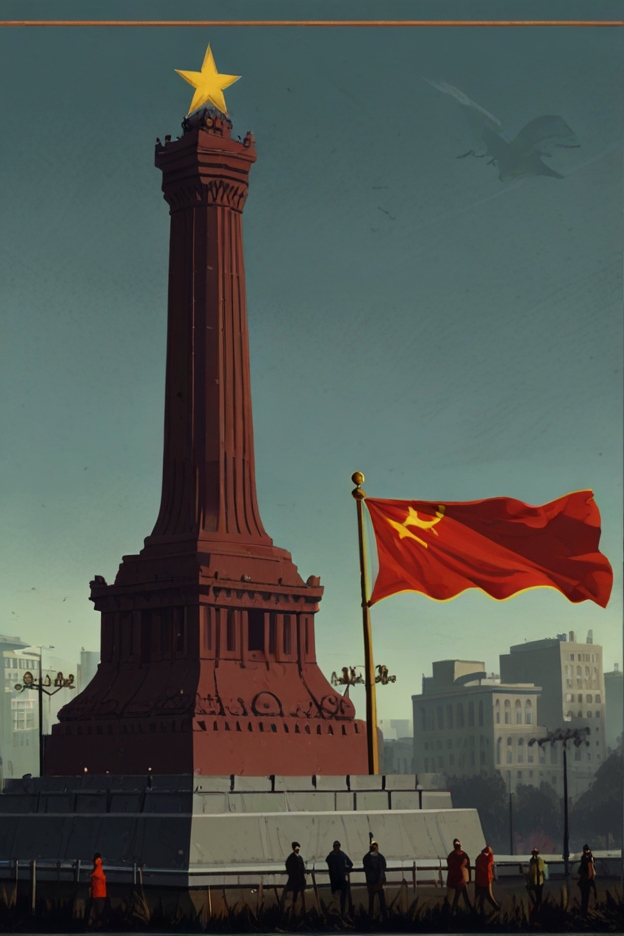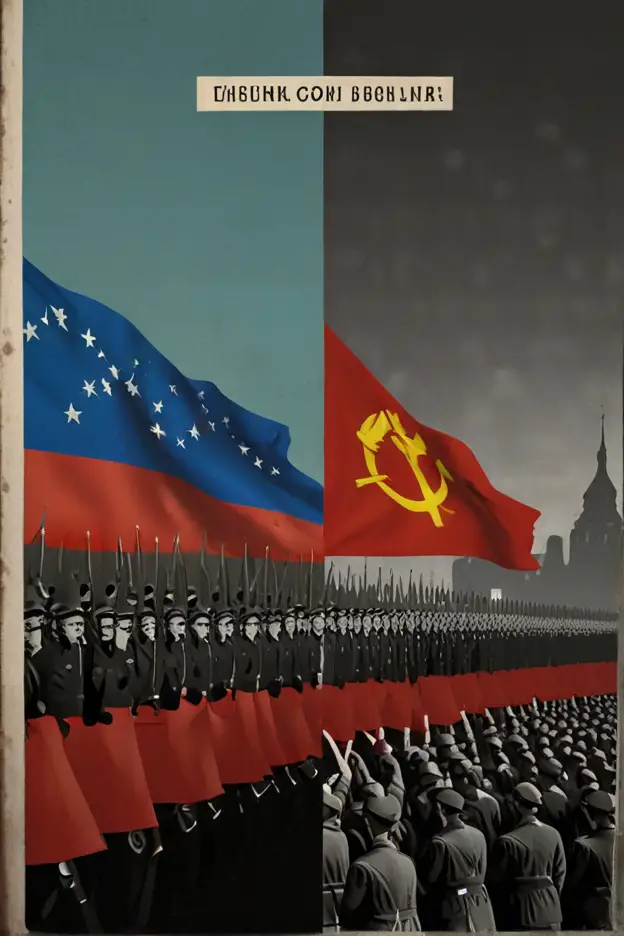
The Cold War was a period of geopolitical tension between the United States and the Soviet Union, lasting from the end of World War II until the early 1990s.
The seeds of discord were sown by ideological differences, distrust, and suspicion, as well as the power vacuum left by declining European empires.
The Seeds of Discord
The Cold War was a prolonged conflict between the United States (US) and the Soviet Union (USSR) characterized by ideological differences.
The US favored democracy and capitalism, emphasizing individual freedoms and free markets, while the USSR adhered to communism, advocating for collective ownership and single-party rule.
These opposing ideologies led to distrust and hostility between the two superpowers, resulting in conflicts across political, economic, and military domains.
The US feared communism’s spread, while the USSR viewed capitalism as exploitative.
This ideological clash fueled the formation of military alliances and proxy wars, culminating in a nuclear arms race.
The Cold War ended with the collapse of the USSR in 1991, but its legacy continues to influence global politics.
- Read also: Understanding the Differences: World War I Vs World War II
- Read also: A Battlefield Guide: Exploring the Major Battles of World War I
Pointing Fingers
The Cold War’s origins are often attributed to Joseph Stalin and the USSR’s expansionist goals.
However, both the US and the USSR contributed to escalating tensions.
The US aimed to defend freedom and contain communism through policies like the Truman Doctrine and the Marshall Plan.
These initiatives, though defensive in US eyes, were seen as aggressive by the USSR.
Other factors, like the division of Germany and the formation of military alliances, further strained relations.
Ultimately, neither side can bear sole responsibility for starting the Cold War.
Understanding the complexity of the situation is crucial for comprehending its lasting impact on global politics.

Events that Fueled the Flames
Several pivotal events heightened tensions between the superpowers during the Cold War:
Berlin Blockade (1948)
In 1948, the Soviet Union imposed a blockade on all road and rail traffic to West Berlin, cutting off the city from the rest of the world.
This move aimed to force the Western Allies to abandon West Berlin, which was located deep within Soviet-controlled East Germany.
In response, the Allies organized a massive airlift operation, known as the Berlin Airlift, to supply the city with food, fuel, and other essentials.
Lasting for 231 days, the airlift demonstrated the determination of the Western powers to support West Berlin and resist Soviet aggression until the blockade was lifted.
Formation of NATO (1949)
In 1949, the United States, along with Canada, the United Kingdom, and several Western European nations, formed the North Atlantic Treaty Organization (NATO).
NATO was established as a collective defense alliance aimed at countering the perceived threat posed by the Soviet Union and its allies.
The alliance committed its members to mutual defense, with an attack on one member considered an attack on all.
NATO’s formation solidified the military cooperation between the Western powers and served as a deterrent against Soviet aggression.
Korean War (1950-1953)
In 1950, North Korea, backed by the Soviet Union and China, launched a surprise invasion of South Korea, triggering the Korean War.
The conflict quickly escalated into a proxy war between the United States and its allies, who supported South Korea, and North Korea and Communist China.
The Korean War was a significant flashpoint of the Cold War, highlighting the global struggle between communism and democracy.
Despite ending in a stalemate with the Korean peninsula divided along the 38th parallel, the war underscored the willingness of the superpowers to engage in military conflicts to advance their respective interests.

Beyond Blame
To understand the Cold War better, it’s essential to move past assigning blame and focus on the broader context.
Nuclear weapons played a pivotal role, leading to an arms race between the US and the USSR.
The concept of Mutually Assured Destruction (MAD) emerged, where both sides knew using nuclear weapons would result in catastrophic consequences.
This deterrence strategy prevented direct confrontation but heightened tensions.
Alongside nuclear weapons, ideological differences, political maneuvers, and proxy conflicts contributed to the complexity of the Cold War.
By examining these factors, we gain a deeper understanding of this pivotal period in history and its lasting impact on global politics.
- Read also: A Historical Overview: Major Battles of World War II
- Read also: What would happen if World War 3 broke out?
Conclusion
The Cold War was a complex conflict with deep historical roots and significant consequences for global politics.
While it is essential to acknowledge the role of key figures and events, it is equally important to understand the broader context and the impact of the Cold War on modern geopolitics.
FAQs
The United States and the Soviet Union were the two main players in the Cold War, with other countries and alliances also involved.
The Cold War lasted from the end of World War II until the early 1990s.
The main ideological differences were the US’s belief in democracy and capitalism versus the Soviet Union’s belief in communism and a centralized state.
Nuclear weapons played a significant role in shaping the dynamic of the Cold War, with both superpowers engaging in an arms race and the concept of Mutually Assured Destruction (MAD).



